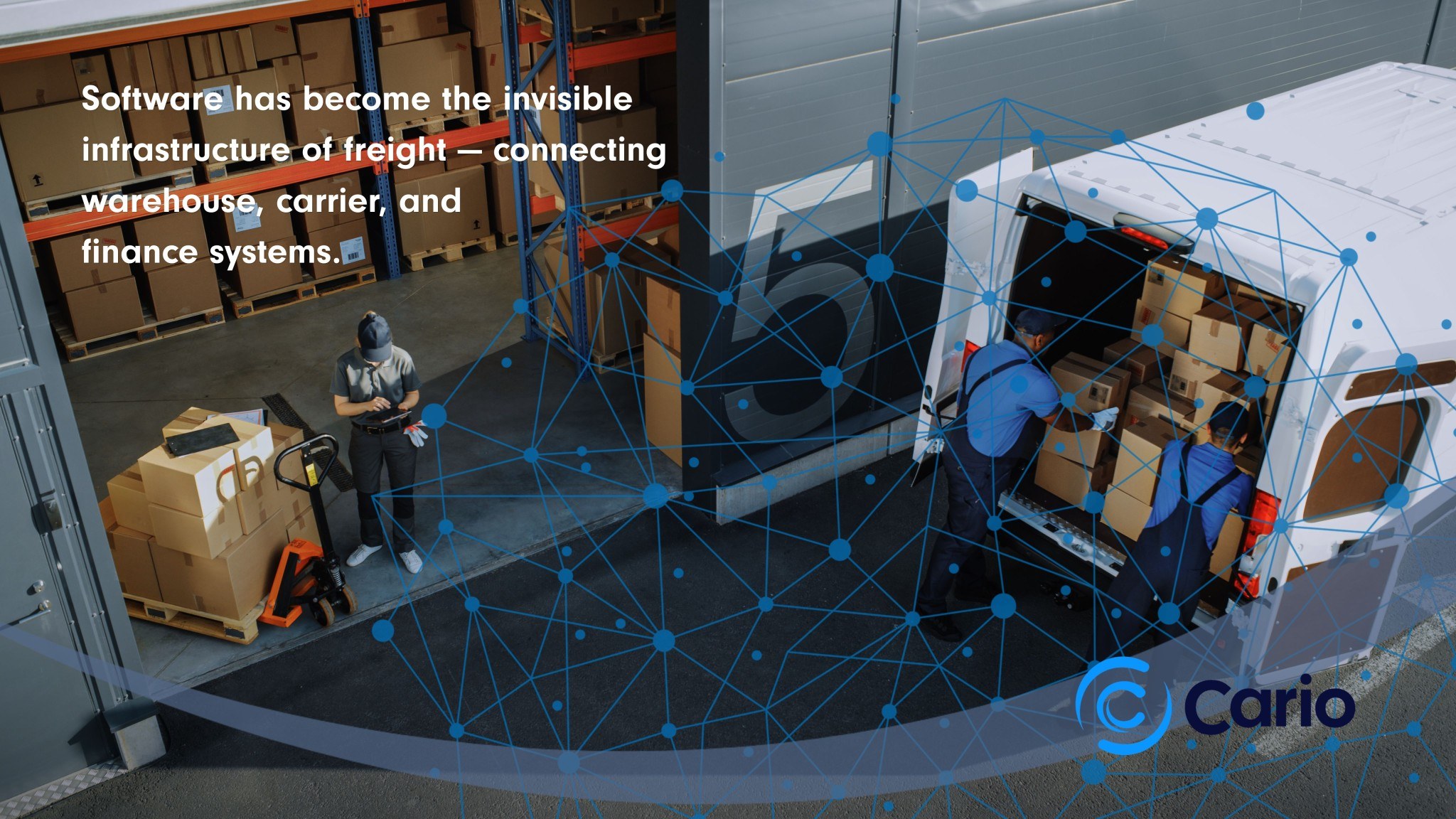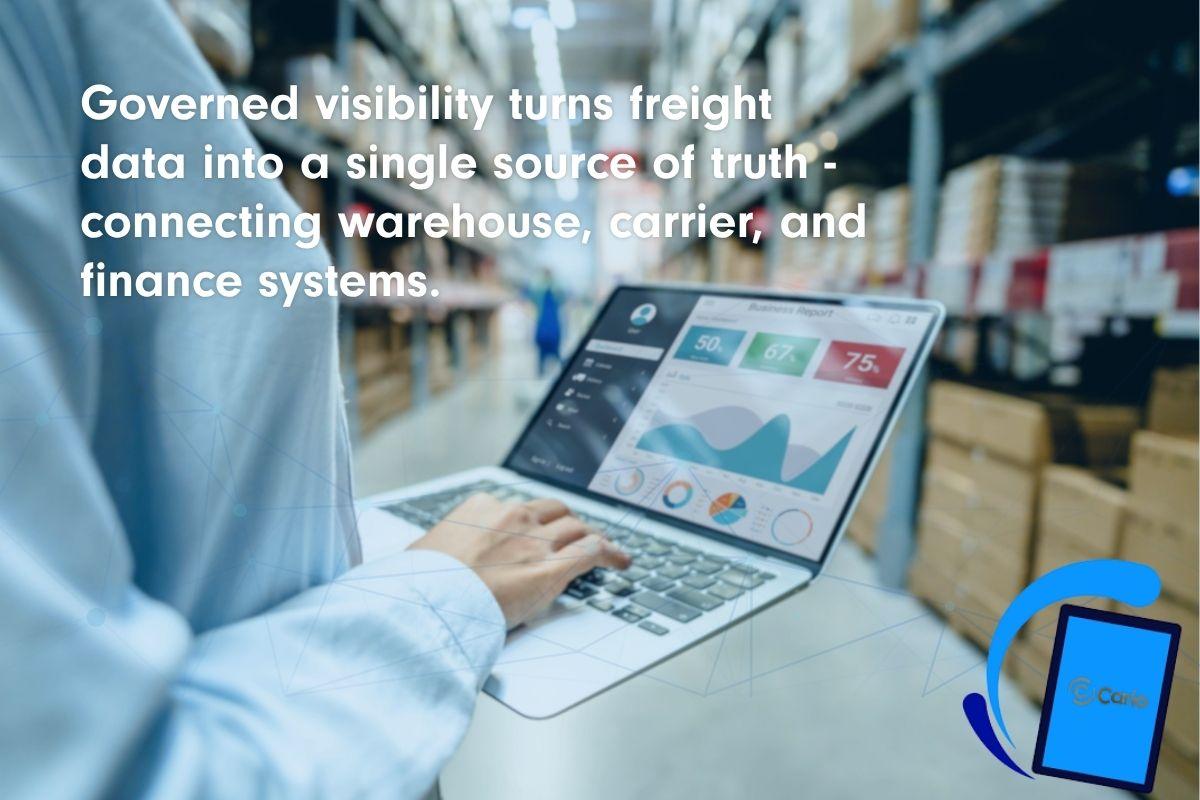
Global logistics is undergoing a quiet revolution — not in trucks or ships, but in code.
The mid-2020s are seeing global and domestic logistics undergo quiet revolutions. People often attribute freight innovation to big-ticket ideas like carbon neutrality or autonomous vehicles… but it goes deeper (and, if we’re honest, a little more vanilla than that).
Don’t mistake vanilla for generic, though. There’s a reason vanilla is a staple: it works. The vanilla revolution I’m talking about? Software.
In a quiet and unassuming way, software has wedged its way into the freight network to the point where it has become part of the fabric itself. In the middle of 2025, global M&A activity has made that truth undeniable. Leading logistics technology companies are acquiring inventory, returns, and visibility platforms to extend their reach deeper into the supply chain and strengthen data connectivity across order, transport, and finance workflows. It makes sense, but there’s deeper meaning to the trend. That playbook is: unify visibility, control last-mile data, and compress cost-to-serve through automation. For Aussie and Kiwi shippers, there are real learns to be taken from this. These global trends are a mirror for where the market is heading, and a roadmap to compete in a squeezed economy without billions of dollars in investment.
Software is embedded within the logistics network
The market is telling us a distinct pattern: software is no longer an adjunct to freight, rather part of the freight fabric itself. Global players are consolidating digital platforms — and technology stacks are now centred around visibility. This takes the form of TMS, inventory, and returns optimisation, linking these into unified ecosystems which blend execution and intelligence.
Throughout my career, I’ve focused on the integration element — it just makes sense to organise the free flow of information from system to system. The right decisions depend on having the right and timely data as fuel. But there’s a forgotten element: what tools actually let you dig deep into visibility across your freight? What’s the point of having perfectly integrated data if you can’t see and act on it in the right way?
It’s a chicken-and-egg scenario. Both matter, but you still need to start with the right egg for you. In freight terms, that means choosing the right carrier and the right platform to unify it all.
It reinforces the ideas behind Cario’s actual usability — bolt on effortlessly to an ERP, unify your carriers, and deliver the same visibility global players have historically benefited from.
Last-mile consolidation signals the next battleground
Last-mile consolidation comes up regularly as a sticking point for my clients. It’s driven by the need to solve three interconnected challenges: scale, density, and sustainability — all under pressure in the current economic environment.
I remember travelling to Retail Fest on the Gold Coast last year and hearing how the average consumer is becoming more reasoned and selective in their purchases. Cost-of-living pressures are still very real, and they’re directly flattening e-commerce volumes. At the same time, environmental scrutiny is intensifying, meaning last-mile networks are now chasing not just efficiency, but also accountability in how they report it.
As networks (somehow) both consolidate and diversify, carrier-agnostic orchestration is becoming the differentiator. The winners will be those who can model last-mile options dynamically — not the ones locked into static, single-carrier contracts.
Visibility and data integrity are the common currency

A trend far beyond freight is reshaping how businesses think about information: data integrity.
We’re generating more data than ever, but much of it still lacks governance, accuracy, or consistency. In logistics, that gap becomes tangible — because when freight data is unreliable, service performance and financial outcomes both suffer.
Every major logistics deal in the past year has included a visibility or data governance component: proof-of-delivery, returns tracking, DIFOT accuracy, or carbon reporting. The common denominator is trust; you can’t optimise what you can’t trust.
At Cario, we’ve placed heavy focus on that exact challenge. Our Freight Management System delivers governed visibility natively, built around the principle of protecting your single source of truth. For most organisations, that’s the ERP or CRM — and an FMS worth its salt should interoperate with it, not compete with it.
Many global 4PLs are only now acquiring platforms to achieve that level of integration. Cario’s customers are already there: operating with clean, unified freight data tied directly back into ERP and finance workflows.
As it should be.
CFO priorities in a shifting economy
The freight and logistics market is feeling the earth move from under its feet. How do we know this? Because the same three priorities keep surfacing in boardroom agendas:
- Cost compression through automation
- Faster O2C (Order to Cash) via digitised PODs
- Sustainability metrics as procurement requirements to report back to shareholders
This tells us visibility has evolved from an operations project into a finance strategy. CFOs and COOs are demanding freight data that speaks the same language as their general ledger — reconciled, auditable and tied to performance outcomes. Any acquisition or technology decision touching freight therefore should start with two simple questions:
- Is this empowering automation and reporting so I can stay proactive with compliance and performance guidelines?
- Is this improving cash generation or reducing cash flow drain?
The answer should be yes to both.
If your freight data still lives across carrier portals and spreadsheets, you are already behind — but that gap represents opportunity. ERP-connected FMS platforms will become the connective tissue between carrier networks, finance and operations. Shippers who unify their freight data now will have a measurable advantage in cost control and analytics later on.
The winners of the late 2020s will not be those who negotiate rates alone. That time has passed. The real impact will come from visibility, automation and integration.

